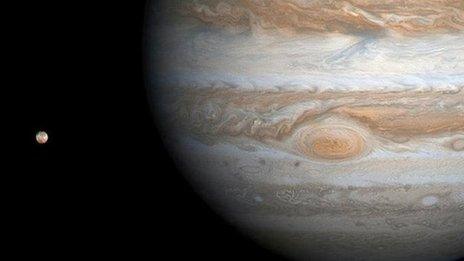Space News: Scientists have solved one of Jupiter's big mysteries!
- Published
- comments
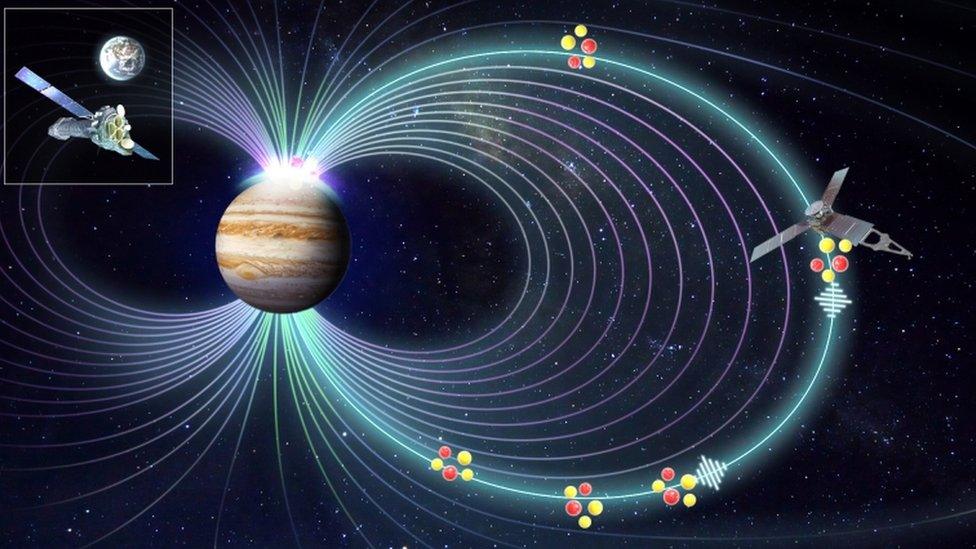
For the first time, astronomers have seen the way particles travel along Jupiter's magnetic field lines and down into the planet's atmosphere, sparking the X-ray aurora
For many years, scientists have wondered how the planet Jupiter produces bursts of X-rays every few minutes.
It now looks like they may have finally solved the mystery! The X-rays are part of the planet's aurora, which are giant bursts of visible and invisible light. They are produced when charged particles - the tiny elements that make up everything in the universe - come into contact with Jupiter's atmosphere.
A similar process occurs on Earth which creates a phenomenon you may be a little more familiar with, the northern lights! However, the processes which produce Jupiter's aurora are a lot more powerful compared to Earth's.
According to researchers, it releases hundreds of gigawatts of energy!
In making the discovery, researchers combined close-up observations of Jupiter by Nasa's satellite Juno, which is currently orbiting the giant planet, with X-ray measurements from the European Space Agency's XMM-Newton space telescope which is in Earth's own orbit.
The team discovered that X-ray flares were triggered by regular the vibrations of Jupiter's magnetic field lines.
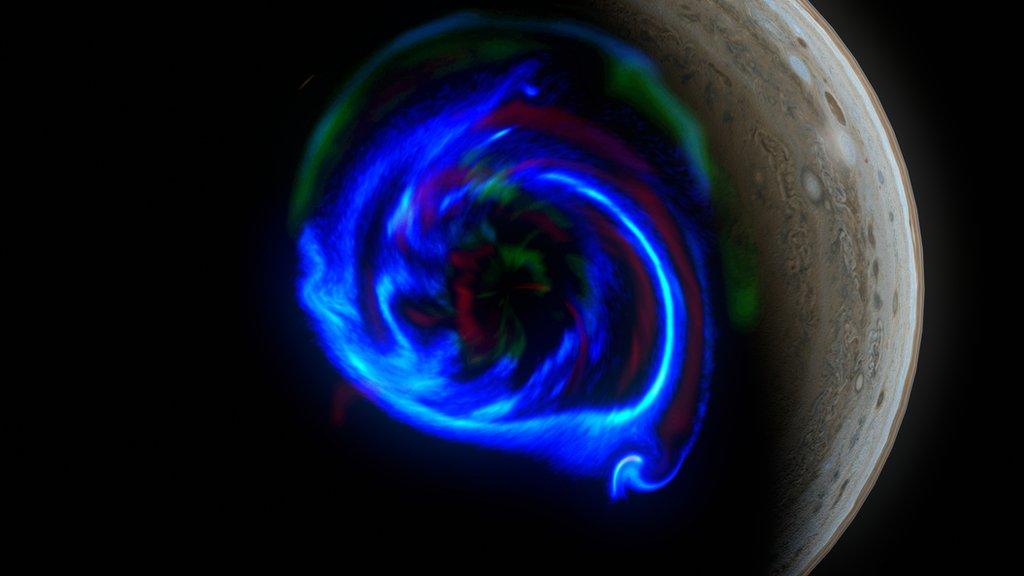
The planet's X-ray auroras are found at its north and south poles
The vibrations create waves of plasma, which is an electrically charged gas. This sends heavy particles "surfing" along magnetic field lines until they smash into the planet's atmosphere, releasing energy in the form of X-rays.
"We have seen Jupiter producing X-ray aurora for four decades, but we didn't know how this happened," said Dr William Dunn from the UCL Mullard Space Science Laboratory who was a co-lead author of the new research.
Jupiter's magnetic field is extremely strong - about 20,000 times as strong as Earth's! Therefore its magnetosphere, which is the area controlled by this magnetic field, is extremely large.
In fact, if it was visible in the night sky, it would cover a region several times the size of our moon!
"We only knew they were produced when ions crashed into the planet's atmosphere.
"Now we know these ions are transported by plasma waves - an explanation that has not been proposed before, even though a similar process produces Earth's own aurora.
"It could, therefore, be a universal phenomenon, present across many different environments in space," he said.
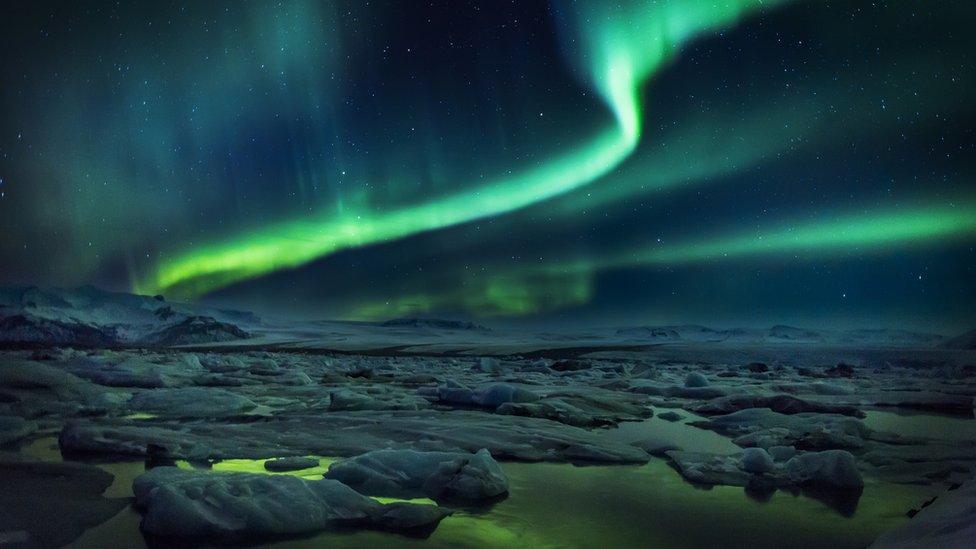
Jupiter's phenomenon is similar to the process which creates the northern lights
The planet's X-ray auroras are found at its north and south poles and they tend to take place with clockwork regularity. During the observation carried out for this particular research, Jupiter was producing bursts of X-rays every 27 minutes.
"Now we have identified this fundamental process, there is a wealth of possibilities for where it could be studied next," said co-lead author on the study Dr Zhonghua Yao from the Chinese Academy of Sciences in Beijing.
"Similar processes likely occur around Saturn, Uranus, Neptune and probably exoplanets as well, with different kinds of charged particles 'surfing' the waves."
- Published30 May 2019
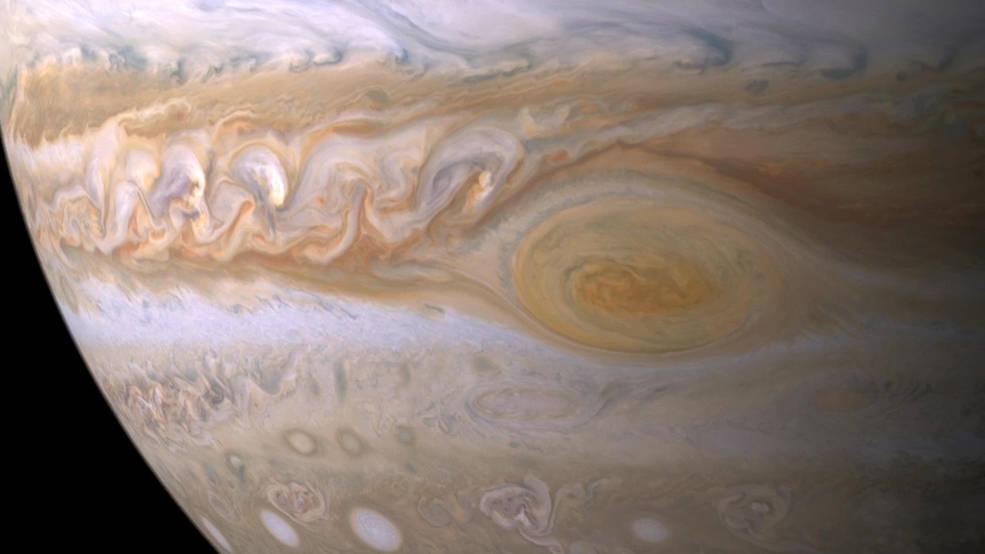
- Published18 May 2021
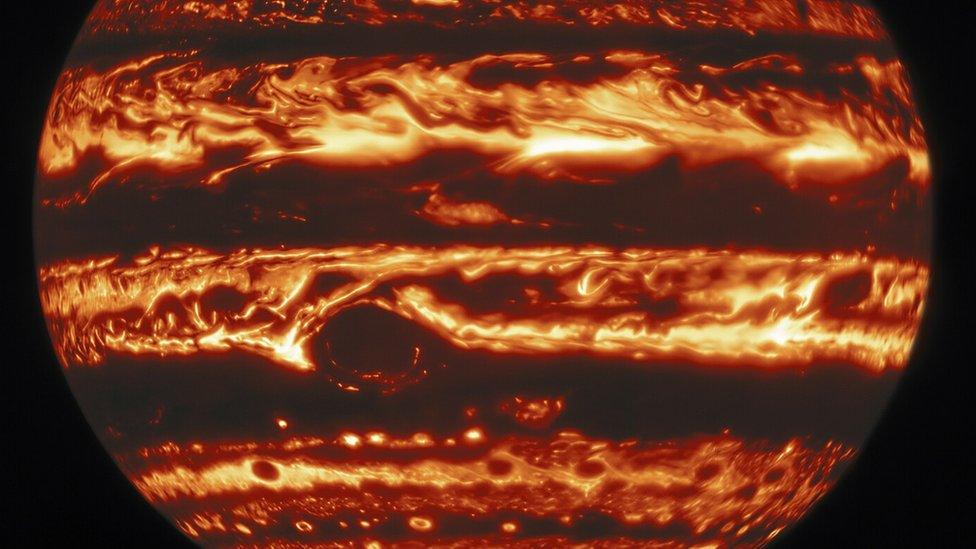
- Published14 July 2011
